
|
|
|

|

|
|
|
|
Paint Analysis :: |
|
|
|
This information is intended as a general overview. Your project may require modifications to the procedures to accommodate your needs. We have experience with a broad range of buildings and structures and know we can assist you with your architectural finishes investigation. |
|
|
|
Laboratory analysis is done with stereo, polarized light and/or scanning electron microscopes and spectrophotometers to assess and identify: layering sequences, types of coatings, colors, composition, appearance and relative age. |
|

|
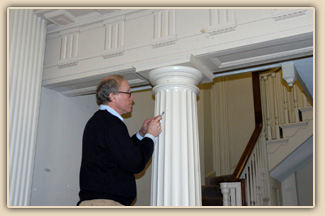 (Frank S. Welsh, uses a ladder to investigate paint finishes at the Virginia State Capitol in Richmond.)
(Frank S. Welsh, uses a ladder to investigate paint finishes at the Virginia State Capitol in Richmond.)
|
|
|
|
|
Introduction :: |
|
|
Original colors of paint, wallpapers, and decorative finishes contribute immeasurably to the design, significance, and splendor associated with historic buildings.
Finishes can be investigated, analyzed, and interpreted to determine their original color and composition. To help historic site administrators, architects, and other restoration professionals plan and administer an investigation and micro-analysis of architectural finishes, we prepared this information to briefly describe the general process and procedures of a paint analysis and tell you what to expect from our reports.
Accurate evaluation is the first step; an appropriate follow-up plan to implement the research findings helps assure a restoration that recaptures the authentic appearance of a documented period. |
|

|
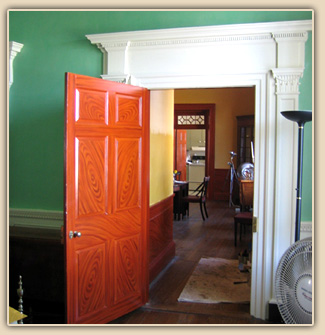 (Original early 1800's paint colors and graining are restored at Bellgrove, a National Trust Property in Middletown, VA)
(Original early 1800's paint colors and graining are restored at Bellgrove, a National Trust Property in Middletown, VA)
|
|
|
|
|
Getting Started :: |
|
|
|
Whether your project is large or small, public or private, there are things you can do to develop a scope of work before you contact us. The investigation of original paints and colors is primarily concerned with examination of physical evidence; however, the process ideally begins with the compilation of documentary information such as historic photographs, descriptions, and maintenance records. A review of these documents is essential to identify significant periods in the building's history and to establish the level of detail required in the paint analysis. This may range from a limited survey of major features to a detailed examination of every surface, from investigation of a general color palette to deciphering a complex decorative scheme. The preservation objective for the building often determines not only the extent and level of detail of the paint analysis but also the format for the investigation. |
|
|
|
When you contact the company help us to get to know your project by describing the objective and supplying an overview of the available background information. If possible, arrange a site visit so we can see the building and condition of the finishes first hand. When distance or finances are constraints, good historic and contemporary photographs, and your assessment of the building will suffice. We can work with you to establish a budget and time frame for the paint analysis and provide a proposal tailored to your needs and available funding. Sometimes, large projects lend themselves to division into distinct phases of investigation and this approach offers flexibility while resulting in a comprehensive study. |
|

|
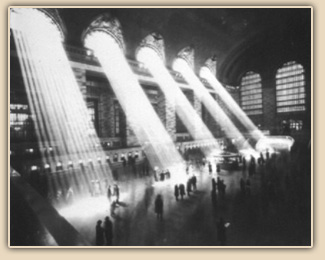 (Grand Central Terminal -Historic Photograph.)
(Grand Central Terminal -Historic Photograph.)
|
|
|
|
|
Investigation & Sampling :: |
|
|
|
The process of taking the samples to be analyzed may be undertaken in one of two ways: we visit the site and conduct the investigation or you take the samples yourself and send them to us for analysis in the laboratory. If you are interested in what is involved in sampling and would like some guidance on how to go about it, contact us for a copy of our paint-sampling guide the PaintpamphletTM. |
|
|
|
The first step in on-site investigation is an overall examination of the building or designated space. This is followed by collection and analysis of paint and/or wallpaper samples. The objective is to discover not only the best color evidence but also the best layering evidence, or, in the case of wallpaper, fibers or fragments with evidence of pattern and design. Samples are extracted from representative surfaces, such as plaster walls and ceilings, and from wood doors, windows and other trim. The samples are generally larger than 1/4 inch in size. An X-acto knife is the principal tool used in sampling, and we always take samples from unobtrusive areas. Sampling techniques can be discussed beforehand if you have special concerns. |
|
|
|
Each sample's location will be carefully identified. Observations about the finishes, their condition, and general architectural features are usually recorded in the field notes. In the process, we note the substrate - plaster, wood, metal or masonry. There may be occasions when the type of plaster, species of wood, or type of metal are useful, possibly even essential, to identify and this work would be done in the lab. Photographs are taken to document the spaces and any unique site characteristics. Photos, information about each sample, and field notes are incorporated into our final report. |
|
|
|
Use of a bright raking light often reveals evidence of hidden decorative wall painting by accentuating the pattern relief. When such evidence is found, we may recommend a follow-up evaluation to determine the nature of the decorative painting. This requires an exposure window to disclose the patterns, colors, surface appearance and condition. We carefully remove all layers of paint covering the artwork, a type of conservation effort demanding use of techniques that peel away the paint layers without harming the original decorative treatment. |
|

|
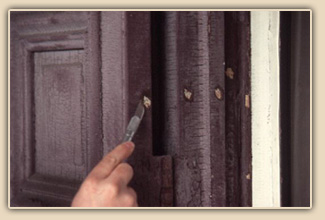 (Investigation of finishes starts by cratering the paint layers.)
(Investigation of finishes starts by cratering the paint layers.)
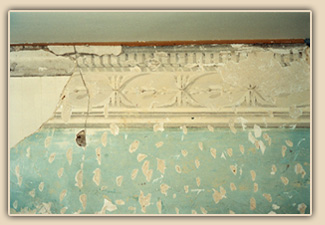
(Nathaniel Russell House, Charleston South Carolina. Original early 1800's trompe l'oeil frieze painted in distemper, hidden behind a coat of later plaster, was discovered and revealed by
Frank S. Welsh.)
|
|
|
|
|
Laboratory Analysis :: |
|
|
|
Whether we gather the samples or you take them and send them to us, the laboratory analysis remains the same. The best color evidence is sought through a comparative examination of all of the samples obtained from the building. Microscopical analysis of the paint layers discloses color, gloss, and relative age. The colors of the paint layers associated with the building's period of historic significance are visually matched and referenced to a color system. Typically we use the Munsell system, but also can use proprietary paint company color systems. Either way, what matters to you is documentation and description of a historic color so it can be accurately reproduced for your project. |
|
|
|
The stereomicroscope is one of the instruments used and the objective of the analysis is to determine the general composition, texture, thickness, gloss, and color of each layer of historical significance. If the walls were once papered, some evidence of those fibers may remain and their presence is noted for inclusion in the lab data. The polarizing light microscope aids in the identification of pigment composition, which is essential for understanding the nature of a paint or architectural coating, its original color, and, possibly, its age. It is also useful in determining the composition of fibers in wallpaper. In addition, microchemical tests may be performed to identify media, distinguishing, for example, a distemper paint from an oil paint. Metals and finishes, such as gold leaf, can also be analyzed and specifically identified. |
|
|
|
The scanning electron microscope with x-ray capabilities (SEM-EDS) is used to analyze elemental composition of pigment particles within paint layers. In compiling the laboratory data, the major effort is to thoroughly describe the finishes of importance to the project, including the number of layers of coatings, the types of finishes (paint, wallpaper, stain, varnish, etc.), the colors, the gloss, and any decorative effects achieved by multi-layer applications. Other characteristics may include film thickness, hardness, opacity or translucency, texture, solubility, and descriptions of dirt, grime, soot, or other surface accretions. Crossectional photomicrographs and photomicrographs of pigments, fibers or surfaces are often taken to record our findings and conclusions for visual verification. |
|

|
 (Paint samples under the stereo microscope.)
(Paint samples under the stereo microscope.)
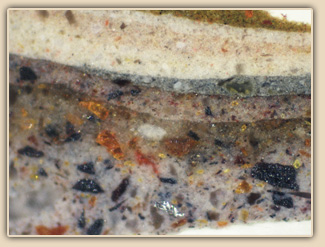
(Crossection photomicrograph of a paint sample from an 1850's cast iron door enframement at the U.S. Capitol.)
|
|
|
|
|
Reports :: |
|
|
|
The findings are presented to you in a meaningful way. We have developed different formats, depending upon the scope of the project and desired level of detail. Our standard report generally explains the scope of the work and includes general observations about the building and its finishes as well as relevant descriptions of on-site investigatory procedures and laboratory analysis. |
|
|
|
Because project requirements vary and the report may have to stand alone, rather than be incorporated into a Historic Structure Report or similar document, we are prepared to expand the historical and architectural descriptions and comment on the relative significance of the findings. Our format includes a Summary of Finishes section, which presents the color palette and types of finishes found within a space. They are described in detail. Color name, color reference values, type of paint and gloss are included. The composition of the paint's pigments or wallpaper's fibers is described, as is any decorative finish. Photographs, floor plans, line drawings, color samples, and photomicrographs illustrate the findings. |
|
|
|
The Laboratory Data Section supplements and supports the information contained in the Summary of Finishes. The data includes descriptions of the layers and types of coatings, and the color evaluations for your project. |
|

|
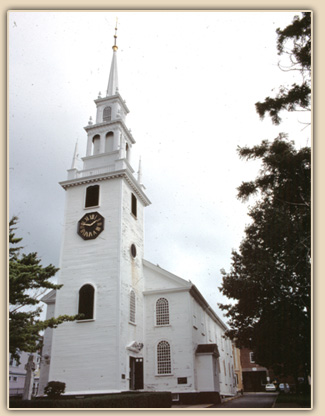 (Trinity Church, Newport, Rhode Island with its original 18th c. exterior white paint color restored.)
(Trinity Church, Newport, Rhode Island with its original 18th c. exterior white paint color restored.)
|
|
|
|
|
Follow-Up :: |
|
|
|
If requested, we may include in our reports a Follow-up section containing recommendations for the preservation and/or conservation of unique decorative treatments. These recommendations may be helpful in describing how Welsh can be of further assistance during the restoration repainting stage. Follow-up participation insures that the replicated finish is true to our findings. |
|

|
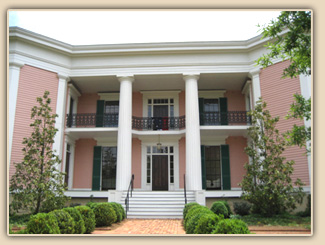 (T.R.R. Cobb House in Athens, Georgia restored with its original colors.)
(T.R.R. Cobb House in Athens, Georgia restored with its original colors.)
|
|
|
|


|
|
|

|
|
